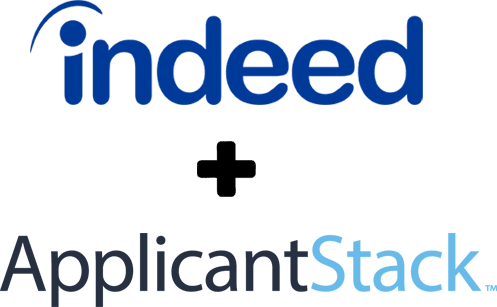What was it like the first time you boarded an airplane? Was it a memorable experience? Is the memory good or bad?
Even if you’ve never flown before, it’s highly likely that you have an idea of how you’d like the process to go. That’s because whatever people do, they seek positive experiences, which explains why onboarding is an essential part of the employment process.
What is Onboarding?
Onboarding is the process of integrating and orienting new hires into an organization. The standard process to onboard a new employee often begins when a candidate accepts a job offer and continues over the first few weeks or months of work.
We can categorize onboarding into four phases:
- Preboarding: In this phase, new employees have already accepted a job offer and completed the necessary paperwork, and are looking forward to starting their first day of work. Here, they would only have basic knowledge of their role in the company and details around company policy, structure, employee benefits, etc.
- Welcome: This typically happens on the first day and throughout the first week where the new hire is introduced to current employees and starts to become familiar with the company’s culture, goals and policies.
- Training: This stage comes after the first week of work, when the employee may be in meetings, workshops or shadowing sessions, learning new skills and procedures to succeed in their role.
- Transition: After four to eight weeks, the new employee should progress from having just a few responsibilities to becoming a full-blown employee.
One of the key things to consider about the onboarding process is that since the pandemic, 71% of organizations have adopted remote hiring. Therefore, it is crucial to know how to onboard a new remote employee. The process and phases of onboarding a remote employee are generally the same as in-person onboarding; however, there are specific things to zoom in on. Here are a few tips:
- Set clear expectations.
- Offer continuous support.
- Create a detailed schedule.
- Schedule routine check-ins.
- Provide the relevant resources.
- Make substantial socialization opportunities available.
The Importance of Onboarding
Employee onboarding is part of talent management, which helps to maintain business competitiveness while increasing employee retention. These are two key metrics for the success of a business. That said, onboarding does play a vital role in the growth and development of an organization as well as its employees.
Let’s look at the key advantages of onboarding:
- Fully immerse new employees in the company’s culture: Through employee onboarding, your organization will introduce the culture of the company, and give new hires a chance to learn, adapt to and even decide from the get go if this is the company culture they want to be a part of. People apply for and stay in jobs that align with their personal and professional values and goals.
- Offer skills training and development so employees can become effective contributors: By understanding early enough the key things about a company, such as its goals and policies, new employees will discover how to perform their duties effectively and quickly develop the skills needed to succeed in their role.
- Adjust employees to their new working environment: According to a Gallup Poll survey, 70% of employees who experienced a positive onboarding experience rated their employment as “the best possible job.” An employee in their “best job ever” will naturally be more comfortable and productive in their role, considering that they have received sufficient training and adjusted well into their new work environment.
While these seem to be all in favor of the new employee, keep in mind that the success of an employee is a sign that the company is also succeeding. That’s why it’s crucial to have a well-thought out and comprehensive onboarding process that includes goals for new employees as well as a strategy that will benefit the business.
What Goals Do You Want to Set for New Employees?
A new hire normally has their short- and long-term goals in mind before starting a new job. However, since starting a new role can be stressful, the HR manager or hiring manager of a company should provide onboarding tasks to assist the new hire streamline their goal achieving process. This way, the new staff know what to look out for and can take steps toward seamlessly being a great contributor to the business.
Some simple goals to set for new employees include:
- Network and collaborate with staff members.
- Meet key performance indicators (KPIs).
- Understand the company.
- Know their roles.
- Master their jobs.
- Communicate well.
- Meet deadlines.
What to Include in an Employee Onboarding Process?
While new employee onboarding is important, the process is useless if it’s lacking in certain areas or inconsistent across departments and roles. Therefore, it’s best to create and follow a detailed onboarding checklist to meet the expectations of the new hire and the company as a whole.
Benefits of Onboarding
Understanding the benefits of onboarding, both for the employee and employer, can help you realize why it’s so important.
Benefits to the Employee
- Promotes a faster transition: An effective onboarding process assists employees in understanding their assigned duties as well as the company’s expectations, allowing them to become engaged and productive quickly.
- Increases productivity: Onboarding provides new hires with the information, skills and resources they need to accomplish their job obligations effectively, thus increasing their productivity.
- Better motivation: If employees feel welcomed and valued during onboarding, this may boost their motivation, leading to higher job satisfaction.
- Builds better relationships: Greater connections and a more supportive work environment can result from onboarding programs that stimulate relationship-building among new and existing employees and managers.
Benefits to the Business
- Increases competitive edge: Onboarding helps firms differentiate themselves in the job market by providing a happy and supportive work environment that attracts top talent.
- Better employee engagement: Employees who feel engaged and connected to their work, colleagues and the company’s goals and values perform better and are more satisfied with their jobs.
- Increases retention rate: Onboarding programs boost employee satisfaction and help reduce attrition rates.
- Cost savings: By increasing retention and decreasing turnover, onboarding programs lower the expenses of recruiting, employing and training new employees.
Streamlining an Ideal Onboarding Process
To consider an onboarding process effective, it must display qualities often referred to as the five Cs of onboarding. These include: compliance, clarification, confidence, connection and culture.
Along with these qualities, it’s important to consider the goals of your organization and what new hires may want as they start the next stage of their careers within your company. Generally, they want a mentor or onboarding buddy, a company tour, equipment setup and procedures, a review of company policies and most of all, on-the-job training. By addressing each of these needs, you can truly reap the benefits of onboarding a new employee successfully.
To transition new employees into your organization seamlessly and effectively, AppliantStack has developed game-changing onboarding software that will save you and your HR team time, while improving efficiency. Start your free trial today!
- 3 Tips to Improve Communication with Applicants - April 26, 2024
- Understanding Contract-To-Hire and How It Works - April 23, 2024
- Should Your Job Listings Include Salary Information? - April 19, 2024











